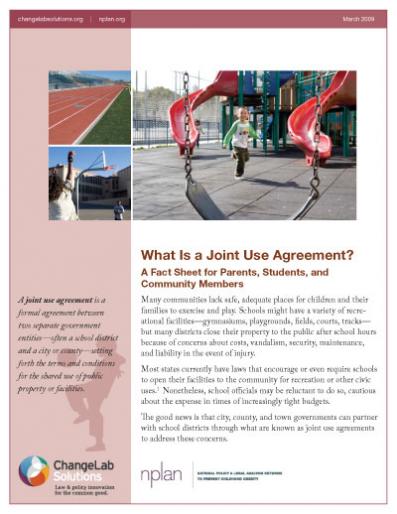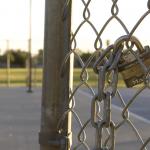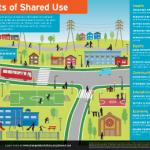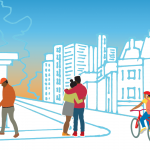What Is a Joint Use Agreement?
For parents, students, & community members
Many communities lack safe, adequate places for children and their families to exercise and play. Schools might have a variety of recreational facilities—gymnasiums, playgrounds, fields, courts, tracks—but many districts close their property to the public after school hours because of concerns about costs, vandalism, security, maintenance, and liability in the event of injury.
Most states currently have laws that encourage or even require schools to open their facilities to the community for recreation or other civic uses. Nonetheless, school officials may be reluctant to do so, cautious about the expense in times of increasingly tight budgets.
“Joint use” – also called “shared use” or “community use” – occurs when government entities, or sometimes private, nonprofit organizations, agree to open or broaden access to their facilities for community use. Joint use can take place on a formal basis (based on a written, legal document) or on an informal basis (based on historical practice).
School districts and other municipal entities increasingly recognize that providing access to existing recreational facilities is one of the most promising strategies for building more opportunities for physical activity.
The good news is that city, county, and town governments can partner with school districts through what are known as joint use agreements to address these concerns.






